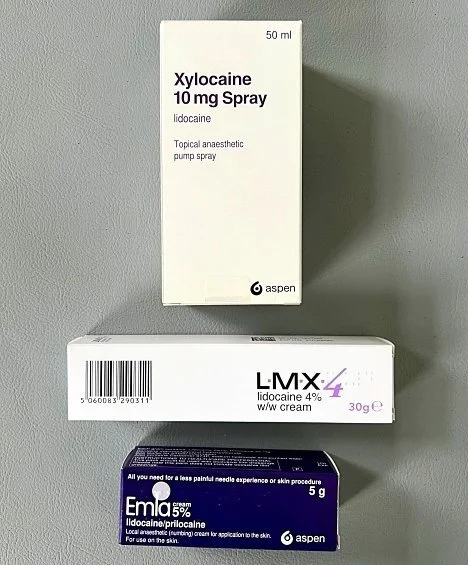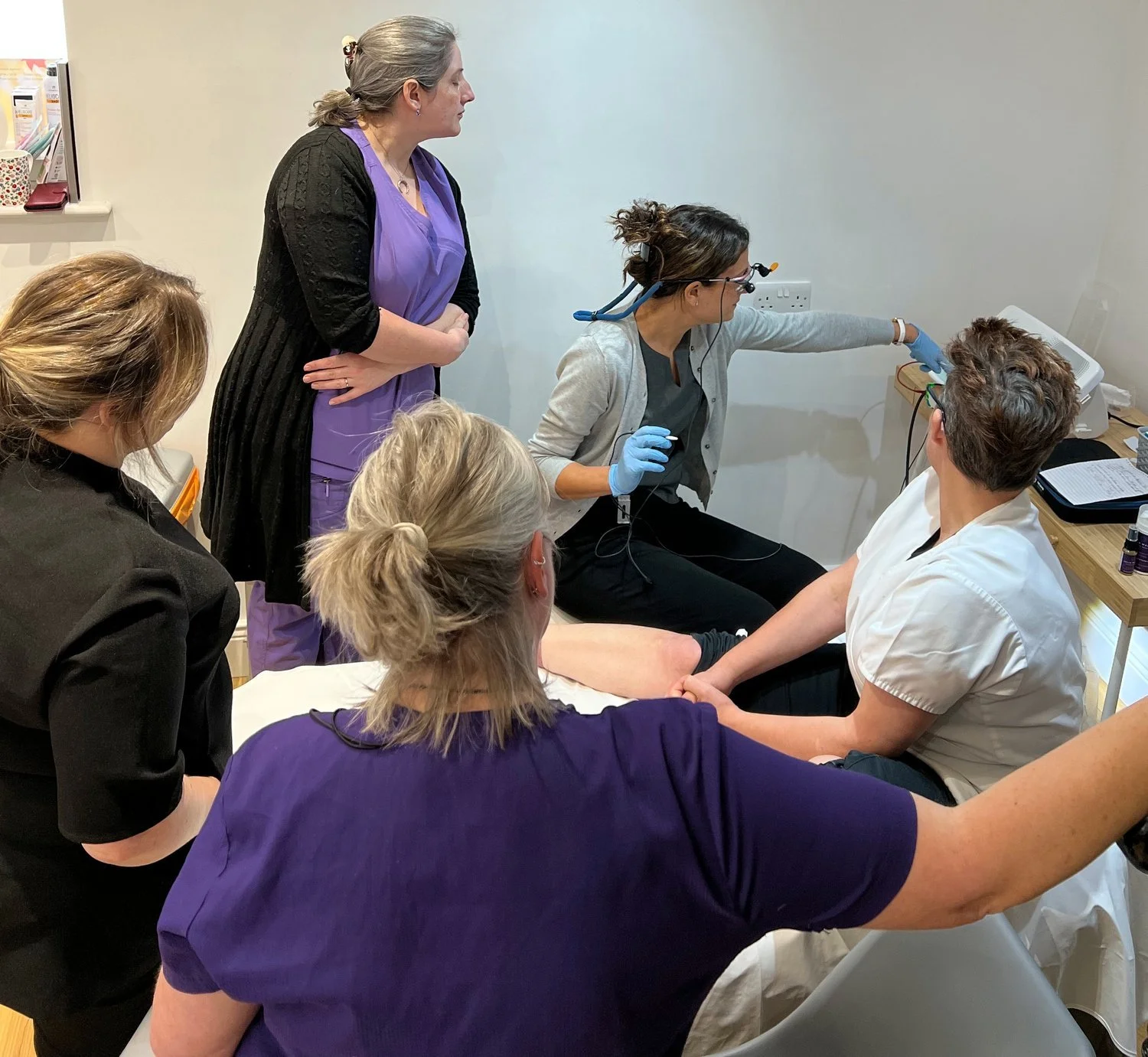Common Questions about Electrolysis
Is electrolysis hair removal really permanent?
I have heard that electrolysis is outdated and in decline. Is this true?
What is the difference between Laser and Electrolysis?
Is electrolysis painful?
Is electrolysis better than laser?
What qualifications should a reputable electrolysist have?
How long does electrolysis take to get rid of all my hair?
It certainly is. In fact, it’s the only treatment that can legally state that it is permanent. This is because electrolysis has been in existence for over 100 years and has the evidence to prove its efficacy.
This is completely untrue and anyone who states this is very much mistaken and most likely hasn’t kept up with the latest industry developments and education.
Electrolysis has been around for over a hundred years; it works and has a proven track record, hence its continued existence. As the only method of permanent hair removal, it is very much in demand, with many of those working in the industry having lengthy waiting lists. The industry needs to attract more practitioners, and the Electrolysis Legacy Group is actively encouraging and promoting this, especially as electrolysis is essential for some.
Advanced Electrolysists can treat unwanted blemishes, such as skin tags and moles on the face and body, using electrolysis treatment. Both services are in increasing demand as the NHS continues to reduce the services it offers in this area.
Far from being outdated and in decline, Electrolysis is becoming ever more important with technological advances to make treatments faster and more comfortable constantly evolving.
Have you wondered about a career in electrolysis? If so, find out more by reading the following article……..
Do you have a question about Electrolysis hair removal or blemish treatment?
Fill out the form opposite, send us your question, and see it added here with an answer.
Electrolysis results in permanent hair removal and can treat all hairs regardless of colour or thickness.
Laser can offer permanent reduction but can’t treat all hairs permanently so grey, translucent, red and fair hair can’t be treated successfully.
With Electrolysis each individual hair is treated intensively one at a time with multiple hairs being treated in a session. The treated hair is removed and a reduction in hair is immediately visible. Laser treats the hairs en masse in a certain area and with repeated sessions, it is possible to see a reduction in hair growth.
To find out more about what Electrolysis is and how it works click on the link below
I would love to say it is pain-free or causes minor discomfort but many clients who have received treatment would disagree.
The level of discomfort felt varies from individual to individual and depending on the area being treated.
The sensation can vary from a mild sensation of heat to stinging.
Most clients would say that regardless of the discomfort felt the results are worth it. Electrolysis hair removal quite literally saves lives and that is no exaggeration. Just read the reviews we have from clients who have received just such treatment.
Some clients don’t find electrolysis uncomfortable at all but, if there is discomfort there are things that can be done to help, from changing the treatment technique, to using numbing creams, painkillers and antihistamines where medically safe to do so.
This is a rather tricky question to answer. It boils down to what you are trying to achieve and the type of unwanted hair growth you have.
Both treatments have their place so you need to think about what you want out of treatment and how you want to achieve it.
As mentioned before laser can offer permanent hair reduction and is generally only successful on darker thicker hairs.
Pale, red and translucent/grey hairs are not treated successfully with laser.
With Electrolysis, you can get permanent hair removal regardless of hair type or colour and it can be used to treat any part of the body where hairs can be reached successfully.
Some individuals will opt to have laser treatment to remove the bulk of hair and then mop up what is left with electrolysis. I know one client who has had purely laser and was hair-free so to speak for approximately 5 years but then started to suffer from re-growth. At this point, she decided to have electrolysis to treat the regrowth permanently.
Unfortunately in some cases, laser treatment can cause paradoxical hair growth (new hair growth caused as a side effect of laser treatment). With Electrolysis, there is no such issue.
A reputable Electrolysist will have a minimum of Level 3 Beauty Therapy with Electrolysis or a Level 3 standalone Electrolysis qualification.
Nationally recognised qualifications include NVQs, SVQs, BTECs and CIBTAC Qualifications.
These qualifications can be achieved at College or more likely privately through independent training providers.
Many Electrolysists will have completed Advanced Electrolysis training and L4 and 5 qualifications that enable them to carry out Advanced Electrolysis which covers the treatment of skin blemishes such as hairs in moles, skin tags, thread veins etc.
Many highly qualified Electrolysists will also be members of the BIAE, our national governing body. To join the BIAE you must pass a theory and practical exam and complete regular CPD training for which you have to provide evidence.
This is not to say that someone who isn’t a member of the BIAE isn’t just as highly qualified but as a member, you can ensure you are being treated by the best in our industry.
A reputable Electrolysist will also have industry-relevant insurance and a local authority license allowing them to carry out treatment on the premises mentioned on the license.
There is no definitive answer to this as there are many things that influence how long and how much treatment is required to get an individual to a point where they no longer feel they need any further treatment.
No professional electrolysist would guarantee how many hours or sessions it would take as there are too many variables affecting this such as how much hair there is, how it has been treated previously, the reason for the hair growth being there in the first place
This may sound very disheartening but once you start electrolysis the results will speak for themselves and you will be overjoyed with the results and clearance you achieve.
It's much better to focus on treatment results and the progress made rather than how long it will take. Throughout your treatment, the length of time you receive at each session and the frequency of treatment will reduce. Towards the end of your treatment plan, you may only require treatment every few months or a tidy-up once in a while until you no longer require treatment at all.
If you require pre-surgery treatment make sure you visit a surgeon either privately or via the NHS they will tell you what areas need to be treated, if at all before surgery can take place.
Pre-surgery electrolysis can take some time to complete so you do need to plan well in advance, a few weeks or months isn’t going to achieve the required results. Once the initial clearance has been achieved you then need to wait 3 months to see if there is further growth that needs to be treated. This process will be repeated until no further growth occurs. At this point, surgery can then be completed.








